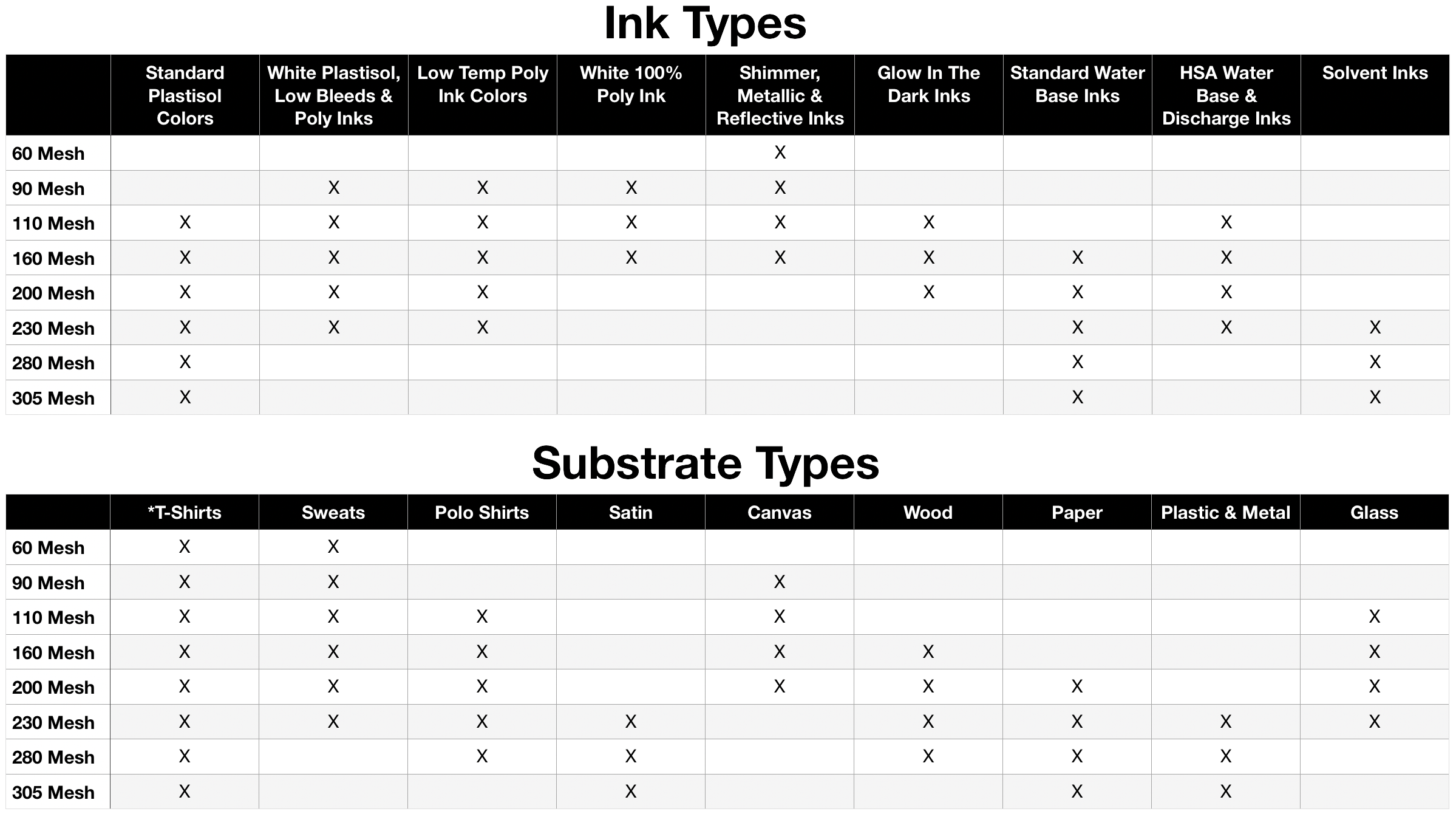Choosing Your Screen Mesh Count
General Tip: Lower Mesh = More ink, less detail // Higher Mesh = More detail, less ink
- 60-90 Mesh - Most commonly used for thick specialty plastisol inks, such as metallics, shimmers, reflectives, puffs, etc.
- 110 Mesh - Most common mesh count for printing with white plastisol ink. Not recommended for water base inks.
- 160 Mesh - Our most popular mesh count. Works well with a wide variety of ink types and substrates.
- 200-230 Mesh - Most commonly used for high detail artwork. Also great for printing with water based inks on wood or paper.
- 280-305 Mesh - Used for super fine detail artwork, half tones, CMYK process printing, as well as solvent and water base inks.
1. What kind of ink are you using?
Many people pick their mesh count solely based off the amount of detail in their artwork, but this is wrong. It is more important to first consider the type of ink you are using, since all inks have very different viscosities. White plastisol ink for example is very thick, so you need a more open mesh count to allow the ink to pass through. On the contrary, black water based ink is extremely thin and needs to go through a finer mesh screen to prevent the ink from bleeding.
2. What material are you printing on?
Different materials absorb different amounts of ink, so different mesh counts should be used to achieve best print results. Fleece, for example, tends to soak up a lot of ink, so a lower mesh count like 110 or 160 is often used to allow for better ink coverage. On the flip side, paper is not very porous at all, so you want to print a very thin layer of ink to prevent the ink from bleeding. For paper, you usually want to use a minimum mesh count of 200.
3. How detailed is your artwork?
Now that you've considered the type of ink you will be using and the material you are printing on, it is time to consider the artwork detail. If for example you are printing with white plastisol (thick viscosity) on black cotton shirts (medium absorbency), you'll likely be looking at a range of mesh counts from 110-230. If your artwork is not very detailed and has big blocky portions, you should probably stay on the lower side of this range, so 110. If your artwork is very detailed and consists of a lot of fine lines and small text, you should be on the higher side of this range, so 230.
General Guidelines
Below is a chart breaking down common ink types and garment/substrate types to get you in the right mesh count ballpark.

*As you can see, t-shirts love ink, and will yield good results with pretty much any mesh count as long as the ink passes through the mesh well. That being said, the tighter the knit of the t-shirt, the better the ink will print on top of the fabric allowing you to use a higher mesh screen. If printing on a very plush combed cotton shirt, the ink will typically have trouble matting down the fibers so you will typically want to use a lower mesh count to lay down more ink.
Keep In Mind
There is no "exact" mesh count to use in any situation, often times you can get very similar results using a range of different mesh counts. Screen printing is a craft, and experimentation is key to finding what works best for you.
|